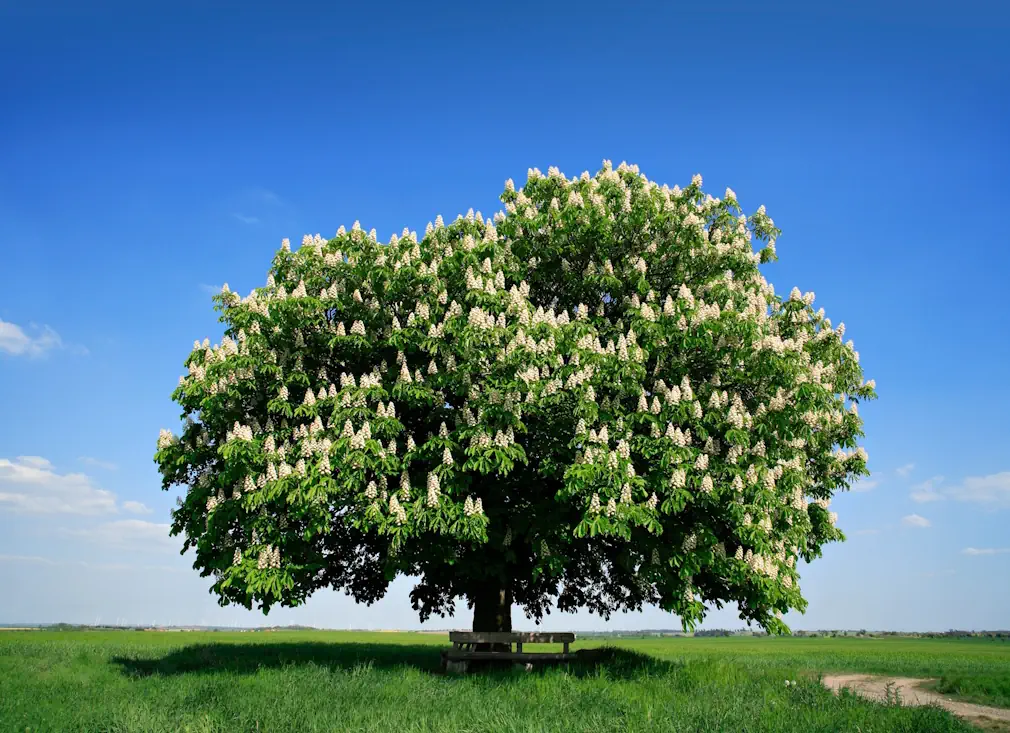Native vs Non-Native
Contents
From ancient woodlands to urban parks, trees play a vital role in Ireland's ecosystems and cultural heritage. But not all trees are the same. Some are native, others non-native, and a few can be invasive. Understanding the differences between these types of trees is key to appreciating and protecting Ireland's natural and cultural heritage.
Native Trees
A native tree is one that has not been introduced by humans and occurs naturally. Ireland has a variety of native trees that colonised the land before it separated from the rest of Europe about 12,000 years ago. Birds and animals carried tree seeds, like acorns
 and hazelnuts, across land bridges from Britain and other parts of Europe. Other tree seeds, like those of silver birch and goat willow, are so light that the wind likely blew them over.
and hazelnuts, across land bridges from Britain and other parts of Europe. Other tree seeds, like those of silver birch and goat willow, are so light that the wind likely blew them over.
Native trees have evolved and thrived in Ireland for thousands of years, shaping its landscapes and supporting diverse native ecosystems. These trees have adapted to the local climate, soil, and wildlife, becoming integral to Ireland's natural heritage. Examples of native Irish trees include Irish and English oak, ash, hazel, Scots pine, silver and downy birch, rowan, and willow. These and other native trees generally support greater biodiversity than non-native trees.
Native trees have deep cultural significance in Ireland, often featured in folklore, mythology, and traditional practices. For centuries, they have provided materials for construction, fuel, and food, as well as habitats for countless species of plants and animals.
You may have also heard the phrase endemic species being used. An endemic is a species only found in a single defined geographic location, such as an island, county, country or another defined zone. Species that are native to a place are not endemic to it if they are also found elsewhere. In Ireland, there are two endemic tree species, the Irish whitebeam and Scannell’s whitebeam.
Non-Native Trees
Non-native Irish trees, also known as exotic or introduced species, are those that have been brought to Ireland from other parts of the world by humans. These trees may have been introduced for forestry, ornamental purposes, or as part of agricultural practices. While non-native species may provide aesthetic, forestry, and agricultural value, they have not co-evolved with native species and do not support as much biodiversity as native trees.
Some examples of non-native trees in Ireland include Sitka spruce, larch, beech and horse chestnut.
 Some non-natives become naturalised, which are species that have successfully established and reproduced in their new environment. In Ireland, there are many examples of naturalised trees including beech and sycamore. While some non-native trees may coexist without detriment to native species, they can sometimes pose risks to native ecosystems by outcompeting native vegetation, disrupting habitats, and altering ecosystems if they spread uncontrollably. These species are known as invasive species.
Some non-natives become naturalised, which are species that have successfully established and reproduced in their new environment. In Ireland, there are many examples of naturalised trees including beech and sycamore. While some non-native trees may coexist without detriment to native species, they can sometimes pose risks to native ecosystems by outcompeting native vegetation, disrupting habitats, and altering ecosystems if they spread uncontrollably. These species are known as invasive species.
Invasive Trees
Invasive tree species are non-native trees that can spread rapidly and outcompete native vegetation, often causing significant harm to ecosystems, biodiversity, and even human activities. These species can disrupt natural processes, reduce biodiversity, and degrade habitats, leading to economic and environmental consequences.
Japanese knotweed is a notorious example of an invasive species in Ireland. While not a tree, it illustrates the impact invasive plants can have on ecosystems. Japanese knotweed can quickly colonise riverbanks, roadsides, and urban areas, outcompeting native vegetation and causing structural damage to buildings and infrastructure. It can cost tens of thousands of euros to have it eradicated from a site.
Other invasive tree species in Ireland include Rhododendron ponticum, which can dominate woodlands and prevent native plants from growing, and the giant hogweed, which poses health risks to humans and animals due to its toxic sap.
Protecting Ireland's Trees for Future Generations
Understanding the distinctions between native, non-native, and invasive tree species is essential for conservation efforts in Ireland. By promoting the planting and preservation of native trees, managing non-native species responsibly, and actively controlling invasive species, we can safeguard Ireland's rich natural heritage for future generations to enjoy.
To learn more about Ireland's native and non-native tree species, visit here. To find out more about invasive species in Ireland, visit invasives.ie.
